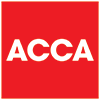Stamp Duty Land Tax on Property
Stamp Duty Land Tax is usually referred to as Stamp Duty, and can be a hefty additional amount to pay on top of the purchase price of a property in England.
The rules round Stamp Duty have changed quite a lot at various times to bolster the English housing market, most recently during the first months of the pandemic when there was a significant holiday allowed by the Treasury, which prevented the predicted collapse.
Charged on the purchase price of land and / or property, Stamp Duty and is payable within 14 days of the transaction completing. It is calculated as a percentage of the purchase price, and operates in bands. The tax is usually paid to HMRC on the buyers behalf by the solicitor as part of the conveyancing process.
NB: In most posts across this site, we’ve avoided the use of percentages for longevity. In this instance, we’ve included the current figures at the time of writing (February 2022) so please double check that these remain valid before making any decisions upon them!
Stamp Duty is currently payable on transactions where the purchase price exceeds £125,000. If you and anyone else that you may be buying with are first-time buyers and the purchase price is £500,000 or less, where different rules apply.
The rate of Stamp Duty you’ll have to pay will depend on whether the property is residential, non-residential, mixed use, or if you already own any other residential property.
The various rates that currently apply are as follows:
- Buying your first home:
- The first £300,000 – no liability to Stamp Duty
- Between £300,001 and £500,000 – 5% of the purchase price payable as Stamp Duty
- If the property exceeds £500,000 – Standard rules apply, as outlined below.
- The first £300,000 – no liability to Stamp Duty
- Buying a property:
- The first £125,000 – no liability to Stamp Duty
- £125,001 to £250,000 – 2% of the purchase price payable as Stamp Duty
- £250,001 and £925,000 – 5% of the purchase price payable as Stamp Duty
- £925,001 to £1,500,000 – 10% of the purchase price payable as Stamp Duty
- Above £1,500,000 – 12% of the purchase price payable as Stamp Duty
- The first £125,000 – no liability to Stamp Duty
- Buying a second residential property:
- The rates are the same as in 2, above, but with a surcharge for each band of 3%. If this property subsequently becomes your Private Residence you may be able to reclaim the surcharge paid.
The Stamp Duty rules are different for Scotland where you pay ‘Land and Buildings Transaction Tax’ and Wales where it is called ‘Land Transaction Tax’. These rules have different rates and bands from those outlined above that apply in England. Please get in touch if you’d like to double check the current rules, or the amounts payable under the differing regional systems.
As we’ve mentioned before, it’s really important to keep clear records around property transactions, and ideally to clarify exactly what will be payable in relation to a transaction before you agree to proceed. The amounts are large and its always best to be forewarned!
Business News
We send regular updates that keep clients aware of changes and suggestions on a wide range of subjects; if you’d like to receive those too, just add your details below and we’ll do the rest! We promise not to bombard you and you can unsubscribe at any time.


